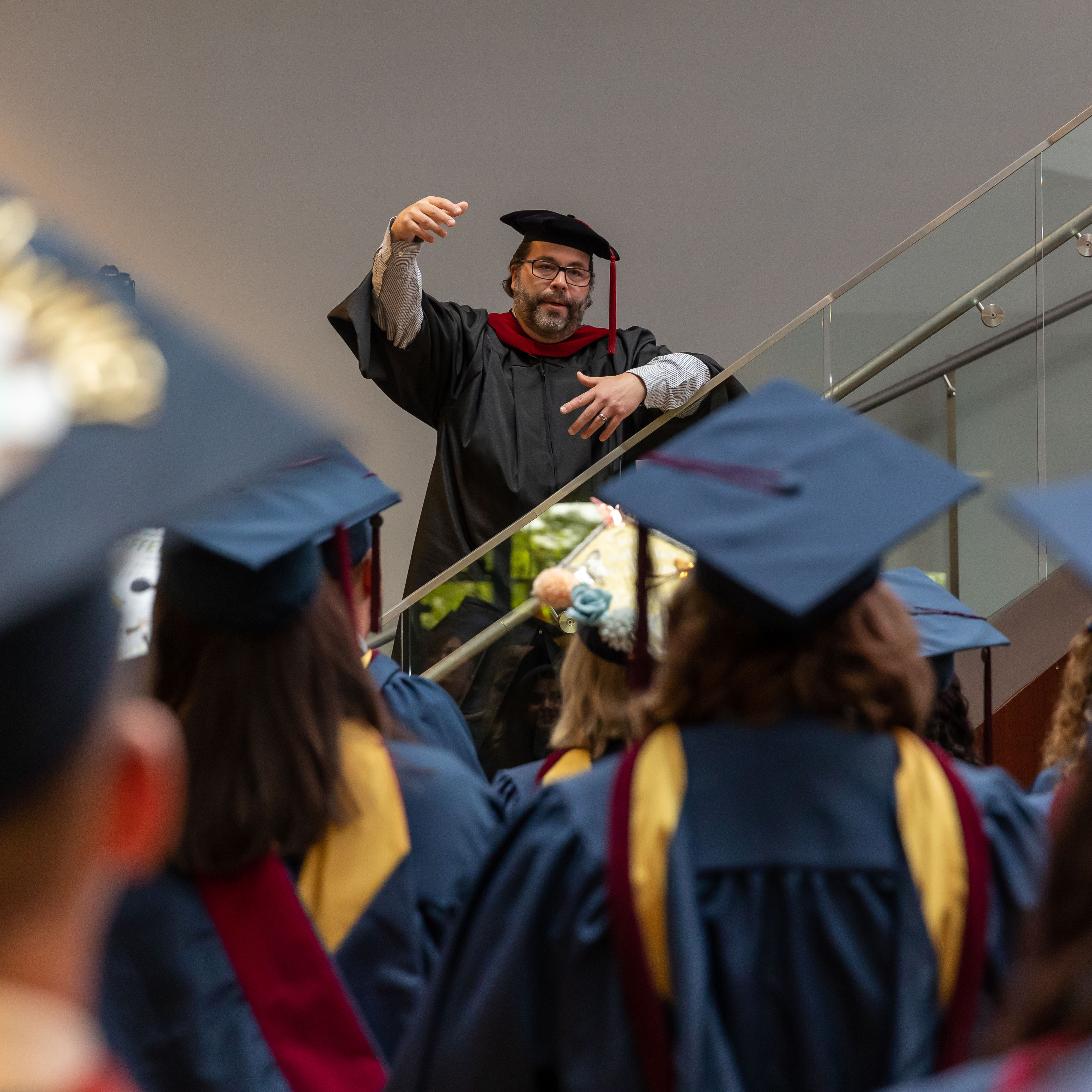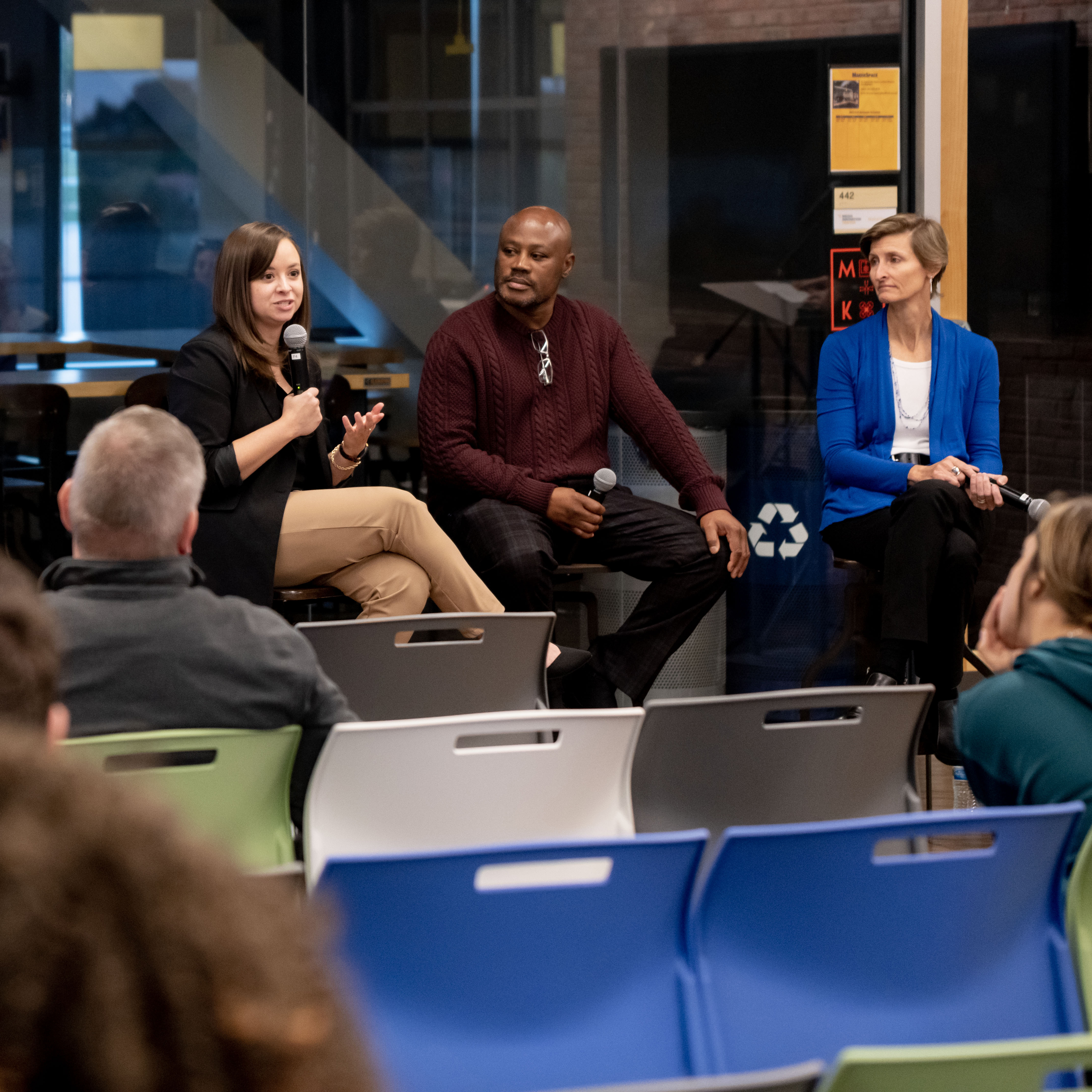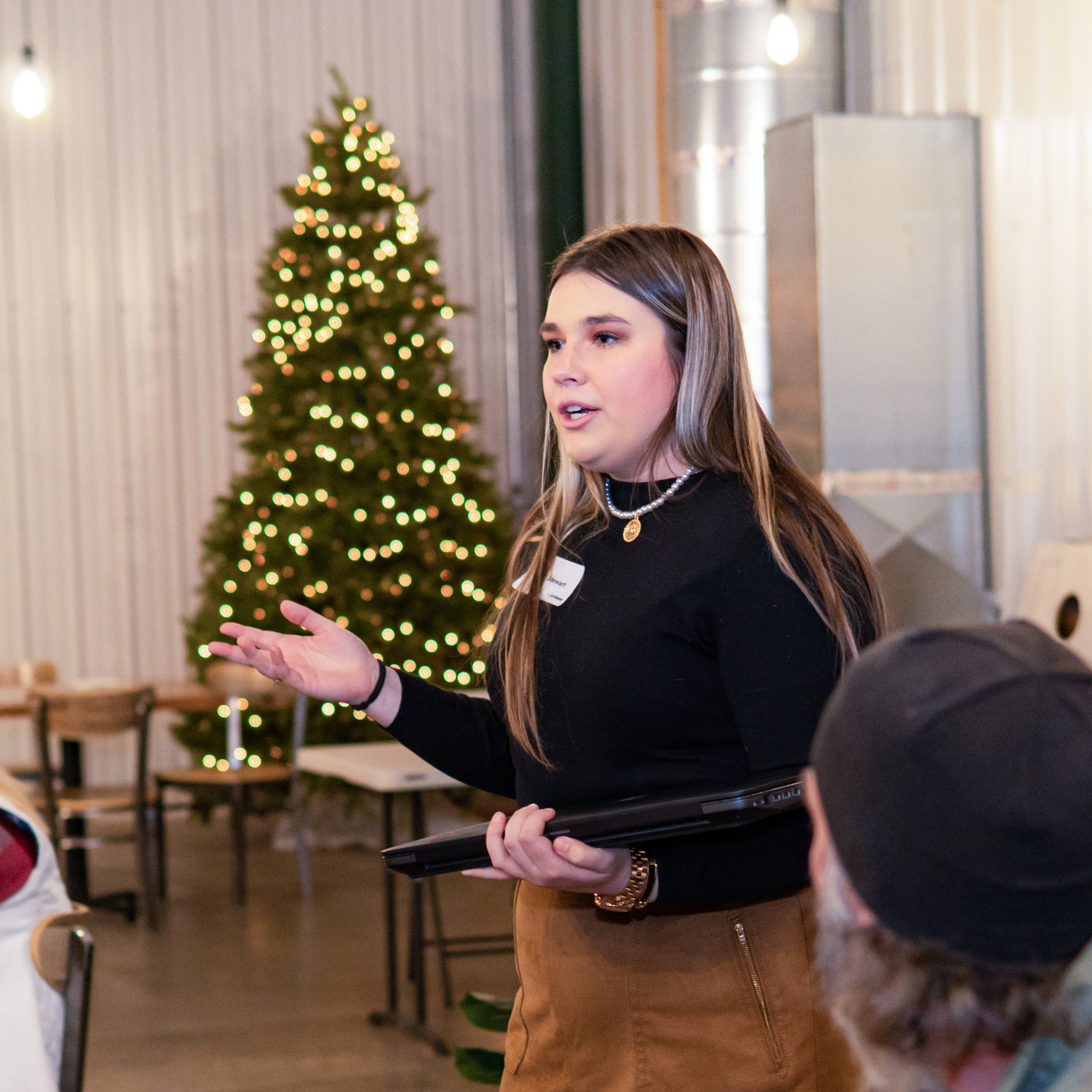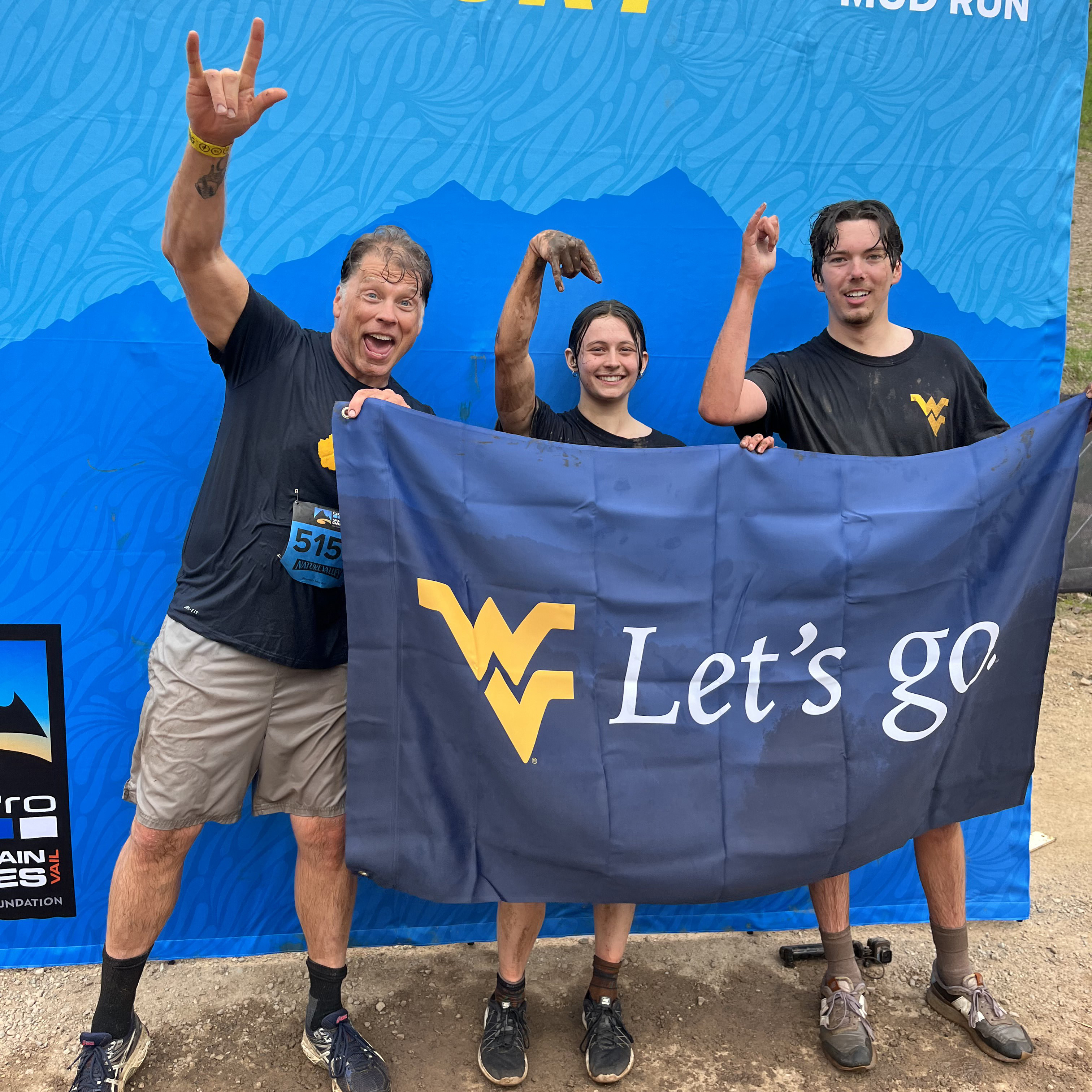20 Years of IMC at WVU
Some may not view a two-year online master’s degree as particularly life-changing, but in the 20 years of West Virginia University’s Integrated Marketing Communications (IMC) program, stories of transformation abound.
In times of crisis, there are always helpers – those who are compelled to use their skills and expertise to better a situation. One of the positive outcomes of the COVID-19 pandemic was the spotlight on helpers, particularly in the medical, service and education industries. In fall 2020, the WVU Reed College of Media’s Public Interest Communication (PIC) Research Laboratory brought together a diverse group of helpers – experts whose work may change West Virginia’s healthcare communications landscape.
Through a series of relationships, contacts and conversations, Dr. Lisa Costello was introduced to Julia Fraustino and Daniel Totzkay. Costello, a pediatric physician at WVU Medicine, had been serving as an advisor to the West Virginia Department of Health and Human Resources since March 2020 when the pandemic took hold in the Mountain State.
“The state started preparing for a vaccine rollout plan in August,” Costello said. “I knew a robust communication plan and strategy was going to be vital to the success of our program in West Virginia. As we started discussing our needs, we really felt that we needed to first better understand what people in West Virginia think.”
Costello contacted colleague Tara Scatterday, executive director for communications and institutional relations at the WVU Health Sciences Center, who reached out to friend Geah Pressgrove, associate professor and chair of the advertising and public relations program in the College of Media.
“We briefly talked about students conducting some of this research, but I knew it was going to be bigger than that,” Pressgrove said. “It was the perfect project for the PIC Lab.”
Julia Fraustino
Daniel Totzkay
Dr. Lisa Costello
Fraustino, assistant professor in the College of Media and founding director of the PIC Lab, has a specialization in risk, emergency, crisis and disaster communication science with an emphasis on community resilience and ethics.
“When I was contacted to lead and apply research for social and behavioral science insights to help with our state’s vaccination communication, that was a clear ‘yes’ for me,” Fraustino said. “This was a natural extension of work I’d been doing with WVU colleagues and community partners on COVID-19 perceptions, and I wanted to give everything I possibly could to help protect lives and get us out of this pandemic.”
Simultaneously, Totzkay, assistant professor of communication studies in the WVU Eberly College of Arts and Sciences, had been leading a National Science Foundation project on COVID-19 in Appalachia. In late summer 2020, he was put in touch with Elaine Darling, the senior program director at the West Virginia Center for Rural Health Development (CRHD), who had started exploring COVID-19 vaccine messaging.
“One thing led to another, and I ended up on a Zoom meeting with Julia Fraustino and Geah Pressgrove, along with Elaine Darling and Lisa Costello,” Totzkay said. “After the initial meeting, we decided to put our heads together to research West Virginians’ beliefs about COVID-19 vaccination.”
As with every stage of the COVID-19 pandemic, the introduction of vaccines sparked new questions. When will they be available? How many doses will we need? Do all doses need to come from the same manufacturer? What’s the difference between FDA emergency use authorization and FDA approval? How and where can we get the vaccine?
With all these unknowns, the PIC Lab team had to devise a research and communication plan that allowed for flexibility as more information became available. In September 2020, they developed a strategy for timely, applicable, tailored and targeted communications efforts for four phases of the vaccine rollout: pre-availability, availability in limited supply for vulnerable populations, increasing availability for other critical populations and the general public, and widespread availability.
“Our initial goals were to try to better understand what West Virginians’ perceptions and beliefs and intentions were when it came to COVID-19 vaccination,” Costello said. “How could we better understand what West Virginians were thinking? What did they want to know, from whom do they want to hear it and what channels would they use to get the information? And how can we best contribute to health equity?”
To start, an initial survey was distributed to residents in all West Virginia counties with quotas set to ensure adequate representation of diverse West Virginians. The anonymous survey was designed to gauge such factors as:
“Our first statewide survey gave us a widespread benchmark of initial perceptions, beliefs and intentions right before vaccines were available in the state,” Fraustino explained. “We were then able to dig deeper on those survey responses with additional quick surveys and longer in-depth interviews and focus groups to really understand the ongoing sentiments and needs of various West Virginian groups.”
That process has continued for more than a year now, with multiple large statewide survey waves including thousands of residents, several key quick surveys, observational research at vaccination sites and personal qualitative insights from hundreds of other West Virginians along the way.
The PIC Lab’s research revealed that West Virginians were most likely to get vaccinated against COVID-19 if they knew the vaccines were safe, effective and trusted by top public health officials in the state. Therefore, messaging focused primarily on vaccine safety and effectiveness while leveraging trusted local spokespersons to share their authentic and expert viewpoints and experiences.
Their research also led to the recognition that many West Virginians are motivated
to get vaccinated to protect themselves, while others are focused on broader
community concerns, which drove the campaign slogan “Community immunity begins
with me,” to emphasize the dual role of the individual and community.
PIC Lab research has informed the production of COVID-19 vaccine communication playbooks and a website with shareable and customizable messaging resources for various community partners, such as local health departments, vaccination clinics, healthcare providers, hospitals and long-term care facilities. Additional campaign materials have included digital and print ads, radio and streaming spots, video PSAs, billboards, educational outreach webinars and more. Tactical implementation is done in partnership with key team members from the WV Center for Rural Health Development, Inc. and the West Virginia–based marketing firm Digital Relativity, in collaboration with the West Virginia Department of Health and Human Resources (WV DHHR) and the state’s Joint Interagency Task Force (JIATF) on COVID-19.
The PIC Lab has also crafted messages for the governor’s office, state pandemic leadership and other state leaders and organizations, and they partner with an array of community groups and associations to share important health information with the public.
“We knew we needed to bring together a comprehensive group of professionals from a variety of organizations to disseminate information at a local level. I think this vaccine communication research and evidence-based approach to messaging has changed the way health information may be shared in West Virginia indefinitely.”
“It became clear that West Virginians tend to turn to local health professionals, community leaders and their own close social circles for trusted information,” Fraustino said. “This was pivotal. We knew we needed to bring together a comprehensive group of professionals from a variety of organizations to disseminate information at a local level. I think this vaccine communication research and evidence-based approach to messaging has changed the way health information may be shared in West Virginia indefinitely.”
Fraustino has been relentlessly dedicated to this massive healthcare communication initiative over the past year, contributing to state-wide agencies like the JIATF on COVID-19 and Joint Information Center (JIC) and providing evidence-based communication and community engagement recommendations to state and national pandemic leaders. The scope of work she leads with Totzkay and the team has expanded to include research on pediatric COVID-19 vaccines, COVID-19 therapeutics and HPV vaccines in addition to other science communication projects in the public interest. They, along with Costello, Darling and myriad partners continue working to respond to the pandemic while building a public health resilience infrastructure that they believe can turn the tide toward more positive health outcomes in West Virginia.
"This is the most important effort that I’ve been a part of. This partnership has far exceeded any goals I initially had.”
“This is the most important effort that I’ve been a part of,” Costello said. “This partnership has far exceeded any goals I initially had. The interdisciplinary approach brings together experts and partners from a variety of fields all over the state to provide a comprehensive strategy and make sure we’re addressing the public’s concerns.”
In addition to providing invaluable services to the state, the PIC Lab is one of the unique ways in which WVU students can be involved in meaningful, real-world work. Just like the PIC Lab brought together leaders from different industries across the state, Totzkay and Fraustino led an interdisciplinary course experience with Audra Hamrick, director of public health practice and undergraduate programs in the WVU School of Public Health, where students at both the undergraduate and graduate levels across the University worked together to create solutions to community problems related to both COVID-19 and HPV vaccination from the perspectives of their various fields of study. Fraustino and Totzkay continue to lead research groups out of the PIC Lab, and through that effort, nearly two dozen student research assistants, ranging from early undergraduate to doctoral levels in multiple programs of study, are devoted to public interest communication efforts that integrate scientific research and real-world application.
“Students take a lot of pride in knowing their work is going to become something tangible and actually used, and that really pushes them to whole new levels,” Totzkay said. “It’s just so inspiring to hear the really innovative and interesting ideas that students of all levels come up with when you give them the license to do so. Watching them wrestle with the complex and ever-changing information, but then seeing them learn how to take a step back and digest it to the point of being able to make communication products – putting themselves in the shoes of the communities we are serving – is so fun and fulfilling to see.”
Like Costello, Totzkay sees this project as one of the most important he has done and will ever do. This is the kind of work he expected to be doing much farther along in his career, but working with the PIC Lab and the interdisciplinary vaccine messaging team – even when it’s intimidating or daunting or even a little pessimistic – has been a dream come true.
"It’s such a great network of super, super passionate and smart people. I am most proud of just being able to answer the needs of West Virginians, community leaders and people out there saving lives and making whatever impact I can.”
“It’s such a great network of super, super passionate and smart people,” Totzkay said. “I am most proud of just being able to answer the needs of West Virginians, community leaders and people out there saving lives and making whatever impact I can.”
Fraustino and Totzkay’s work through the WVU PIC Lab has been recognized as a national best practice by the U.S. Centers for Disease Control and Prevention (CDC), and in October 2021, Maj. Josh Poling presented the duo with the U.S. Army’s Civilian Service Commendation Medal in recognition of “outstanding support during the COVID-19 pandemic response” and a “commitment to excellence and service [that] was instrumental for mission readiness and accomplishment” – a medal that Costello and Darling also received for their contributions to pandemic response.
Maj. Josh Poling presents Daniel Totzkay (left) and Julia Fraustino (center) with the U.S. Army’s Civilian Service Commendation Medal outside Martin Hall on the WVU Downtown campus in October 2021. Photo by Erica Lindsay
Fraustino and team continue to serve on the WV JIATF on COVID-19 and participate in national efforts through meetings with such entities as the Rockefeller STAT Action Network, the CDC and the White House.
“It’s been the greatest privilege of my career to directly contribute to public health and the effort to save lives,” Fraustino said. “And getting to work with this remarkable team is a silver lining of the pandemic for me. This kind of interdisciplinary work was the goal when we launched the PIC Lab in 2016, and I hope to continue providing translational science and other meaningful services for the public good for years to come.”

Some may not view a two-year online master’s degree as particularly life-changing, but in the 20 years of West Virginia University’s Integrated Marketing Communications (IMC) program, stories of transformation abound.

Ashton Marra and Jonathan Stoltman officially launched Reporting on Addiction in September 2021 – during National Recovery month. Since then, they have developed curriculum and delivered trainings and presentations to dozens of students and organizations.

Staying in West Virginia wasn’t part of Jenna Stewart’s post-college plan, but advice and opportunities provided by mentors in the WVU Reed College of Media have helped the Fairmont native find her calling in the Mountain State.

It happened just like that. One day after class, "Prof Scat" invited Maria Boyle and Ethan Moore on the adventure trip of a lifetime - interning for the GoPro Mountain Games in Vail, Colorado.